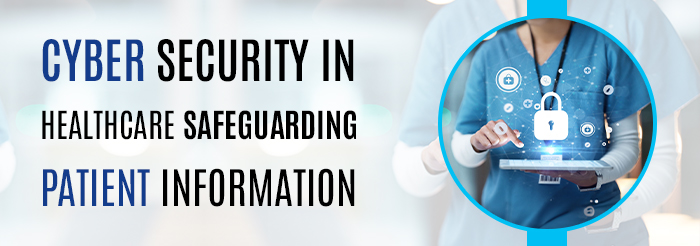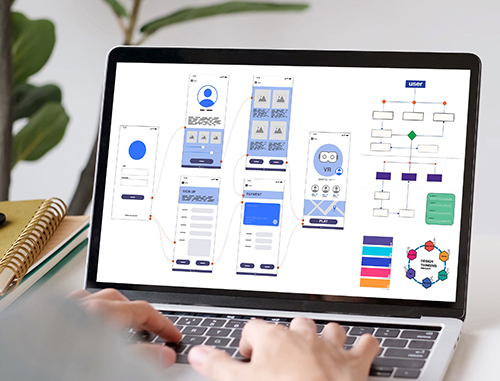Cyber Security in Healthcare: Safeguarding Patient Information
Posted on
In an era of digitization and technological advancements, the healthcare industry is at the forefront of adopting innovative solutions to improve patient care and streamline operations. However, this progress also comes with a significant responsibility: safeguarding patient data and ensuring confidentiality.
Healthcare cybersecurity, or cybersecurity in healthcare, has never been more critical. In this comprehensive guide, we will delve into the essential aspects of healthcare cybersecurity, the threats healthcare organizations face, and best practices to fortify your institution’s security posture.
Understanding the Cyber Threat Landscape
DDoS (Distributed Denial of Service)
DDoS attacks involve overwhelming a network or website with an excessive amount of traffic, rendering it inaccessible. Healthcare organizations are not immune to these attacks, which can disrupt patient care and lead to substantial financial losses.
Data Breaches

Data breaches in healthcare can have severe consequences, not only compromising patient confidentiality but also causing damage to an institution’s reputation. The theft of sensitive medical records can result in identity theft, insurance fraud, and more.
Insider Threats
Insider threats are a significant concern in healthcare cybersecurity. These threats can originate from employees or other trusted individuals with access to sensitive data. Whether intentional or unintentional, insider threats can lead to data breaches and compromise patient confidentiality.
Ransomware
Ransomware attacks involve encrypting an organization’s data and demanding a ransom for its release. Healthcare institutions are particularly attractive targets for ransomware attackers due to the critical nature of patient data.

Phishing
Phishing attacks use deceptive emails or messages to trick recipients into revealing sensitive information, such as login credentials. Healthcare employees may unknowingly fall victim to these attacks, leading to security breaches.
Healthcare Cybersecurity Best Practices
Now that we have a fair understanding of the threats, let’s explore the best practices to improve your healthcare organization’s security posture.
- Conduct Regular Risk Assessments
Conduct comprehensive risk assessments on a regular basis to successfully enhance your organization’s cybersecurity defenses. This proactive strategy enables you to thoroughly examine your cybersecurity landscape for weaknesses and possible attacks. By doing so, you enable your firm to establish effective security measures proactively, long ahead of any possible intrusions..
- Encrypt Patient Data
The encryption of patient data is one of the linchpins in safeguarding patient confidentiality. This critical step guarantees that even if data is compromised, the information remains indecipherable in the absence of the accompanying encryption key. Encrypting patient data creates an unbreakable barrier, keeping critical medical records private from prying eyes.

- Implement Access Controls
Fortify your organization’s cybersecurity posture by meticulously enforcing stringent access controls. Limit access to sensitive patient data to authorized personnel exclusively. Implement a multifaceted system of access controls, including role-based access, thereby erecting an impervious barrier against unauthorized individuals attempting to view or tamper with patient records.
- Train and Educate Staff
Create a culture that promotes cybersecurity awareness among your employees by implementing continuing training and education initiatives. These efforts serve as the foundation for arming your employees with the information and expertise required to quickly detect and report phishing attempts, as well as any security breaches, so bolstering your organization’s defenses.
- Regularly Update and Patch Systems
Ensure the integrity of your cybersecurity infrastructure by meticulously maintaining and updating all software components, including operating systems and applications.
Keeping your software up to date with the latest security patches is paramount, as vulnerabilities present in outdated software can be exploited by cyber adversaries, leaving your organization susceptible to breaches.
- Develop an Incident Response Plan
Build resilience in the face of cybersecurity incidents by crafting a comprehensive incident response plan. This strategic blueprint, thoughtfully designed and regularly rehearsed, serves as a critical lifeline during a cyber breach. Having a clearly defined procedure in place can significantly minimize the impact of a security breach and expedite the recovery process.

- Collaborate with Cybersecurity Experts
Expand your cybersecurity approach by seeking synergistic relationships with healthcare cybersecurity professionals. These experts have a thorough awareness of the complexities specific to the healthcare business, providing essential insights, threat information, and help on the application of best practices to protect your organization’s digital fortress.
- Use Multi-Factor Authentication (MFA)
Enhance the security of your organization’s systems and data through the strategic implementation of Multi-Factor Authentication (MFA). This advanced security measure introduces an additional layer of protection, requiring users to provide multiple forms of verification before being granted access to systems and data, adding an extra shield against unauthorized access.
- Regularly Backup Data
Safeguard the sanctity of patient data by adhering to a rigorous schedule of data backups. Frequent backups serve as a critical fail-safe mechanism, ensuring that in the unfortunate event of a ransomware attack or data breach, you possess the means to restore critical patient information from a secure, unaffected source.
- Monitor Network Traffic
Maintain ongoing network awareness by attentively analyzing network traffic for any signs of suspicious activity. Advanced threat detection systems act as sentinels, detecting and responding to irregularities in real time, bolstering your organization’s defenses against cyber attacks.
Healthcare Cybersecurity: The Numbers
To emphasize the importance of healthcare cybersecurity, let’s take a look at some compelling statistics:
- In 2020, healthcare was the most targeted industry for cyberattacks, accounting for 79% of all reported data breaches. (Source: HIPAA Journal)
- Healthcare continues to be the sector with the highest data breach costs, escalating from $10.10m in 2022 to $10.93m in 2023, marking an 8.2% growth.The average cost of a data breach in the healthcare industry has increased by 53.3% in the previous three years, adding more than $3 million to the average cost of $7.13 million in 2020. (Source: IBM Security)
- Insider threats, including unintentional actions by employees, are responsible for more than 50% of healthcare data breaches. (Source: Verizon)
- Malware attacks and IT-related incidents accounted for 67% of healthcare data breaches and 92% of all leaked medical records. (Source: UpGuard)
Conclusion
In today’s healthcare landscape, protecting patient data and ensuring confidentiality are paramount. Healthcare cybersecurity, or cybersecurity in healthcare, must be a top priority for all healthcare organizations. By understanding the threats, implementing best practices, and staying vigilant, you can safeguard patient information and maintain trust in your institution.
Remember that cybersecurity is an ongoing effort that requires constant adaptation to evolving threats. Collaborate with experts, educate your staff, and invest in the latest security technologies to stay one step ahead of cyber attackers. In doing so, you not only protect patient confidentiality but also secure the future of healthcare in an increasingly digital world.

 What Are the First Steps When Planning a New Websi..
What Are the First Steps When Planning a New Websi.. SEO Strategies to Rank Your Dental Practice
SEO Strategies to Rank Your Dental Practice How AI is Driving Patient Engagement and Revolutio..
How AI is Driving Patient Engagement and Revolutio..